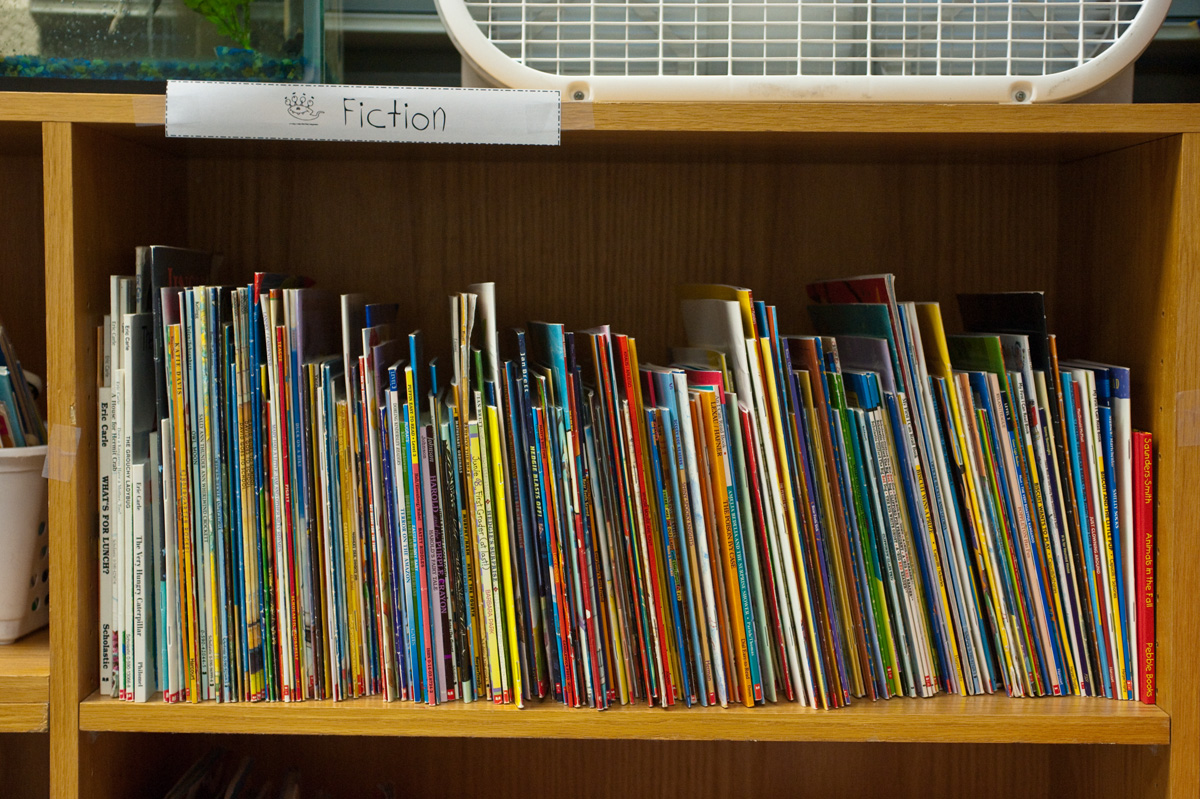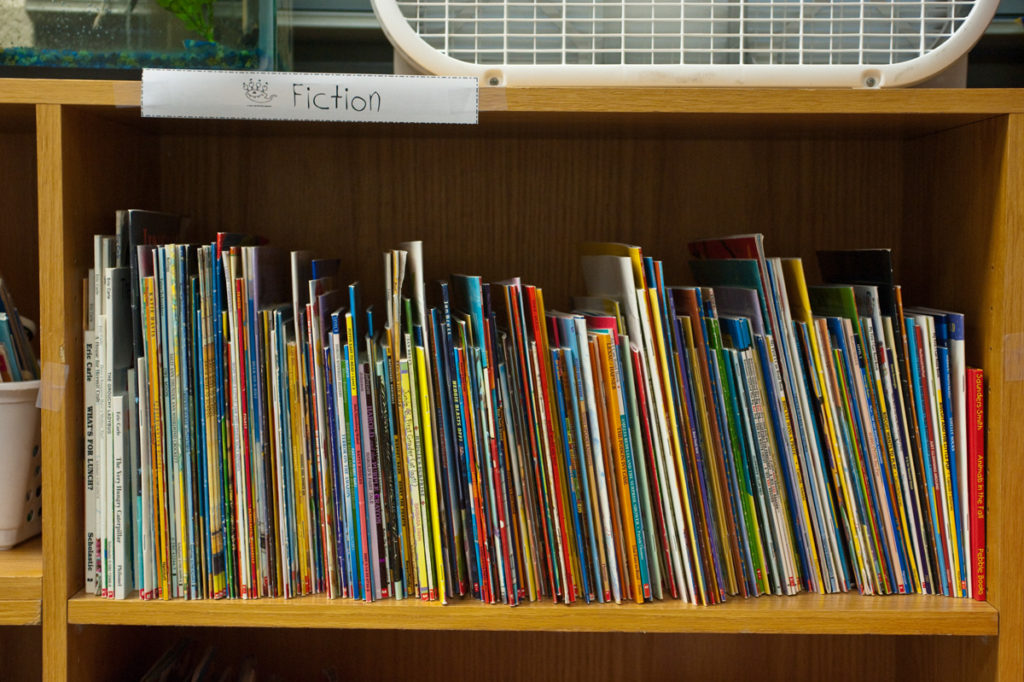Building Our Classroom Library

 When my new third grade students saw our classroom library for the first time this year, all of the book baskets on the shelves were empty, and although the baskets were labeled “F” and “NF,” I’d torn off all the other labels I’d made to categorize the books. I put boxes full of books out on the library rug so the children could see that we’d have lots of books in the library eventually, but they were closed to students for the time being.
When my new third grade students saw our classroom library for the first time this year, all of the book baskets on the shelves were empty, and although the baskets were labeled “F” and “NF,” I’d torn off all the other labels I’d made to categorize the books. I put boxes full of books out on the library rug so the children could see that we’d have lots of books in the library eventually, but they were closed to students for the time being.
The children were not too put off by the bookless library situation, but it was a bit traumatic for me! It was hard for me to let go of the organizational system I’d developed, and although I was excited about having students sort and categorize the books, I worried about starting out with limited choices for independent reading.
I stuck to my plan because I really wanted the children to see the class library as “ours” rather than “mine.” I also hoped having students sort the books into categories would help them understand why certain books were supposed to go into certain baskets. With previous classes, I’d created the categories and explained what the labels on the baskets meant, but I was constantly finding books put back in the wrong places. If this was truly to be our library, students had to be able to find and put away books on their own.
So, I began this year by giving each table group a basket with a mixed selection of fiction and nonfiction books at a variety of reading levels. We went over how to hold books, how to put them away in the baskets, what independent reading looks like, and other reading routines. Then on Day 3, it was time to begin brainstorming categories.
They came up with a long list to start, including fiction and nonfiction, genres, picture books, chapter books, subject matter, reading levels, by author, etc. I followed up with a mini-lesson on fiction and nonfiction and a think-aloud with two different books. Were they fiction or nonfiction? What kind of basket would I expect to find them in? What category would I choose? I modeled how there could be more than one idea. Each student chose a book from the basket at their table and wrote a category for it on a post-it. Then as a class, we grouped books that seemed to belong together, and students started making labels for the baskets.
Most of their labels made a lot of sense, although some were in kid language I would never have used, such as “Destructive Earth” for a category that included books about volcanoes and earthquakes. When Alex decided “Trouble” was the category for his fiction book, I tried to steer him away, saying there might not be a lot of books that fit that description. He defended his idea, pointing out that in lots of stories the main character gets into trouble or causes trouble. He named The Cat in the Hat as an example. I recognized that I was trying to take over and thought better of it—and we added a basket called “Trouble” to our class library.
As groups worked on sorting more books over the next few days, students found that they often disagreed about where books should go. I noticed that a few had a hard time understanding how a book could go in two places. For instance, The Cat in the Hat could go in the “Dr. Seuss” basket or the “Trouble” basket. We discussed why both baskets were good choices and how it is okay to have differing opinions. In this case, since both baskets were equally good choices, we put it to a vote.
Most of the books I brought out fit into at least one of the categories the students had already created, but we added some new baskets, including “Rocks and Minerals” and “Award-Winning” (a category I hadn’t thought of!).
Overall, I was really impressed by how well building the class library seemed to be going—and not just in the ways I’d hoped. I’d noticed quite a few unanticipated benefits:
- Students were paying such close attention to the books—even noticing Caldecott and Newbury award medals on the covers! I’ll definitely be using the “Award-Winning” category later on in the year to get them thinking about what makes good literature.
- Having fewer choices at the beginning actually seemed to help make the process of choosing an independent reading book less overwhelming for students. There was less milling around and I heard “I don’t know what to pick!” less often than in years past.
- I’ve gotten to know these students quite well as I’ve observed them working together to build our library. I’ve learned a lot about them from watching them handle materials, make labels, and debate about whether a character was getting into enough trouble to be in the “Trouble” basket. (There are ten books in that basket now—the category clearly makes sense to third graders!)
I’ll share more about the outcome of this project and what I learned from it in a follow-up post soon!
Suzy Ghosh is a second grade teacher at Bush Hill Elementary school in Fairfax County, Virginia, and is also a Responsive Classroom consulting teacher.
Tags: Classroom Jobs, Classroom Library, Classroom Organization
